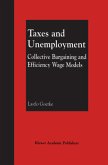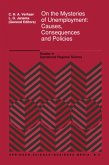Labour markets are differentiated by occupation and types of training, and these submarkets are seldom in equilibrium. This disequilibrium -- shortages and surpluses in labour markets -- is often attributed to a lack of flexibility in wage structures, the limited possibility for substitution between submarkets, and the high adjustment costs. In addition, market changes are difficult to foresee, thus making it equally difficult to respond appropriately.
This book contains the results of research from three major European institutes -- the Research Centre for Education and the Labor Market (ROA) at the University of Limburg in the Netherlands, the Institute for Employment Research (IER) at the University of Warwick in the U.K., and Institut für Arbeitsmarkt- und Berufsforschung (IAB) at the Bundesanstalt für Arbeit in Germany -- looking at how each institute conducts labour market forecasts by education and type of training. The common element of these institutes is their use of the manpower requirements method. The book is grouped into three parts -- Models and Methods, Forecasts, and Reflections -- with each institute presenting its results in each section.
This book contains the results of research from three major European institutes -- the Research Centre for Education and the Labor Market (ROA) at the University of Limburg in the Netherlands, the Institute for Employment Research (IER) at the University of Warwick in the U.K., and Institut für Arbeitsmarkt- und Berufsforschung (IAB) at the Bundesanstalt für Arbeit in Germany -- looking at how each institute conducts labour market forecasts by education and type of training. The common element of these institutes is their use of the manpower requirements method. The book is grouped into three parts -- Models and Methods, Forecasts, and Reflections -- with each institute presenting its results in each section.








